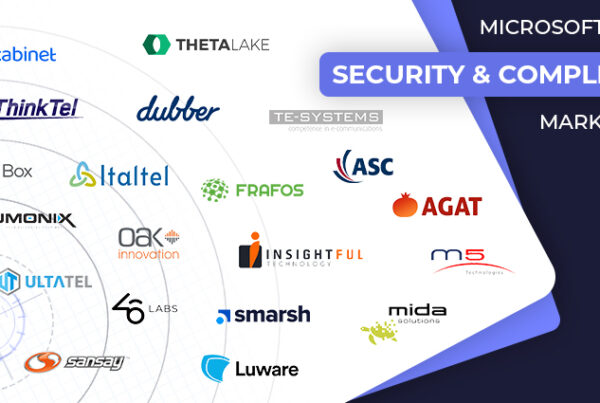
Bring Your Own Device (BYOD) was projected to be instrumental in transforming the workforce, exceeding $350 billion by 2022, up from just $94B in 2014. The unpredictable and unprecedented worldwide pandemic has forced businesses to find ways to quickly adapt to this “new normal” while keeping their employees safe by implementing new technologies that offer secure work-from-home solutions. To create the same level of communication experience at home as when workers were in a physical location, most companies invested heavily in robust conference and video collaboration tools like Microsoft Teams, Cisco Webex, Zoom, and RingCentral.
Overnight, video and collaboration communication tools became an absolute necessity to keep businesses afloat. However, with this sudden surge in adoption, companies and their employees now face a new set of challenges. Companies must now navigate compliance and regulatory challenges when using collaboration tools or face the fallout of embarrassing human errors or becoming a potential target for cybercriminals.
So, what should organizations know about collaboration tools to par the course of this digital workforce? Here are my top predictions for what is on the horizon for collaboration tools in 2021:
1. The traditional office as we know it will permanently change. Having all employees work in centralized offices for a full workweek has been forever altered by the pandemic-specific concept captured in the phrase ‘work-from-home’. Instead, the benefits and value of a more permanent ‘work-from-anywhere’ environment powered by collaboration platforms and cloud-based applications will win out. Even in a post-pandemic 2021, the traditional office will be replaced by a new hybrid office and remote collaboration-based workplace.
2. Organizations will double their usage of cloud-based video conferencing and collaboration tools in 2021, resulting in more compliance violations. The vast majority of video users will turn on their cameras most or all of the time – leading to video hosts suffering from unintended incidents as their cameras capture NSFW events or controversial background scenes. This will result in an increased amount of compliance violations.
3. Collaboration security will be a top priority for government. Incumbent collaboration tools (Zoom, Teams, Webex) are going to get dragged into conversations about privacy law and big tech, further pressuring them to stay on top of security and compliance capabilities. At least two regulatory agencies will make explicit statements about regulatory obligations to retain and supervise collaboration conversations. Additionally, collaboration tools will replace many call center interactions and force organizations’ hands on related compliance, privacy, and security risks.
4. Collaboration-related personal injury lawsuits will begin to crop up. There will be a wave of court cases involving bad conduct and abuse within online meetings across video, voice, and chat interactions. Public examples of sensitive, non-public, personal, and/or proprietary data exposed by employers, employees, and/or customers during collaboration sessions across video, voice, and chat interactions will increase.
For organizations to remain competitive and compliant with industry regulations and avoid hefty fines, they must embrace the new digital workforce by futureproofing their video, chat and voice collaboration tools to create a secure future-ready workforce. Integrating technological solutions helps alleviate the burden and compliance challenges when using modern collaboration platforms to help scale security detection and compliance supervision capabilities for communications across video, voice, and chat.










